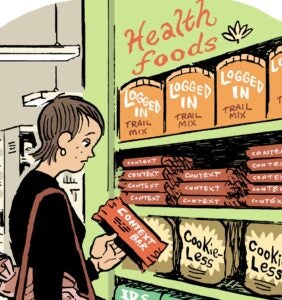 “On TV And Video” is a column exploring opportunities and challenges in programmatic TV and video.
“On TV And Video” is a column exploring opportunities and challenges in programmatic TV and video.
Today’s column is written by Hew Bruce-Gardyne, co-founder at TVSquared.
It’s an advertiser’s dream to deliver targeted content via programmatic, and the industry is certainly making progress.
However, legislative, inventory-level and operational obstacles need to be overcome to seamlessly integrate programmatic into TV advertising.
The biggest challenge may come down to legislation. The legislation surrounding the TV advertising industry as we know it is complex, and overcoming this obstacle in relation to programmatic is twofold.
Each country in which programmatic trading is to be rolled out faces legislative restrictions on the content aired. For example, in the US, ads shown around a particular program – especially children’s programming – must be approved by the network.
This restriction is real and onerous. Scripts are vetted before and after screening, together with checking for minimum sizes for legal notification texts and evidence to support claims made in the creative. In examples like this, the need for pre-approved content could reduce the ease and speed with which new players enter the market.
In the UK, strict rules govern the time of day certain ads can be aired. For example, gambling ads cannot be shown before the watershed or safe harbor – the time after which programs featuring adult content may be broadcast – and there are rules preventing two or more competitor brands advertising within the same commercial break.
If ads are served programmatically, broadcasters have far less control over the content served to the audience. Some broadcasters are starting to test the waters with programmatic buying, using data to understand audiences and justify pricing.
Privacy is also a concern. Combining third-party (or offline) consumer data with real-time TV viewing data, advertisers can take a far more targeted approach by segmenting and buying audiences beyond primary demographics like age and gender. However, there is a fine line between accessing anonymous data and data considered to be personally identifiable information (PII), introducing a whole new level of restrictions by country.
For example, the US Federal Trade Commission acknowledged that the line separating PII and non-PII data is become increasingly blurry and created guidelines to identify and protect sensitive information. In the EU, the 2018 General Data Protection Regulation takes a hard line against traditional data-anonymizing techniques to safeguard personal information. Country-by-country regulations – and how they define PII – are major hurdles for realizing true programmatic TV.
Although other potential issues will arise, such as opt-in advertising, which challenges overarching broadcast rules, privacy and programmatic’s lack of control present the largest obstacles to overcome.
Larger Piece Of The Broadcasting Pie
Today, over linear TV, the primary mechanism for delivering “targeted” inventory is via multichannel video programming distributors (MVPDs). Out of the 15 minutes per hour of total advertising content, US MVPDs are granted just two minutes per hour of programmatic inventory that can be sold directly to advertisers.
These timeframes make it difficult enough for advertisers to trade via programmatic guaranteed (or direct), where they know their ad will be scheduled to air above others. However, in the case of real-time bidding, advertisers have a very small window of spots on which to bid among competitors.
The lack of inventory available is largely due to broadcasters’ fears that they will lose substantial amounts of revenue – as pricing strategies inevitably change – and that CPMs will tumble. They are also concerned about losing control over the content aired as a result of increased programmatic activity during commercial breaks.
Concerns over revenue protection and brand health are casting a large shadow over the future of programmatic advertising. Ad tech companies and networks need to forge stronger relationships to alleviate these fears and agree on acceptable content.
Operational Challenges
The very nature of programmatic advertising is that the whole process – selecting a spot, agreeing on a price and delivering ready-to-air content to the broadcaster – takes place in a matter of milliseconds. All of these elements are problematic.
In the digital arena, an auction takes place in response to a specific request by an individual with a well-understood profile. By contrast, there is no real equivalent of the tradeable cookie ID in linear TV.
Within digital, the ad server winning the bid needs only to serve to a very small proportion of the screen estate. By contrast, a high-quality, 30-second TV ad may take up hundreds of megabytes of file space and needs to be queued up to be injected into the broadcast stream. This type of file, which could take several seconds to transmit, is far too large to be sent for broadcast in real time and defeats the main purpose of programmatic TV.
Set against this, although the workflow and technology requirements for the auction itself are well understood, there is little impetus to implement.
The TV advertising industry is on the cusp of something revolutionary in terms of programmatic TV but these hurdles must be addressed. We need to agree on the rules governing programmatic broadcasting, inform and reassure broadcasters and refine the technology.
Until then, TV advertisers can leverage today’s technologies to better target customers, measure TV’s impact and optimize campaigns for maximum efficiency. While the programmatic TV holy grail is some years away, TV is an optimized marketing channel – just like digital – providing advertisers with a broad reach and the precision to target the right customers, in the right places and times for the greatest response.
Follow TVsquared (@tvsquared) and AdExchanger (@adexchanger) on Twitter.













